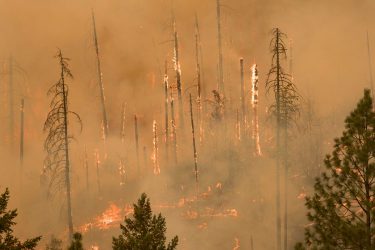
Forest fires are one of nature’s oldest land management tools. For more than 10,000 years, Indigenous people in the Pacific Northwest have harnessed the power of fire to control the threat of destructive wildfires and encourage new growth across landscapes. In recent centuries, as the number of people living in forested areas has increased and large amounts of fuel have built up over years of suppression, large seasonal wildfires are becoming more common. The impacts of these fires have been felt far and wide — and not just by those directly affected by the flames.
Mounting research shows that wildfire smoke can adversely affect populations living many miles away from the actual location of the fires. As the Northern Hemisphere moves into summer in the grips of the COVID-19 pandemic, the confluence of risks that fires present to our landscape and our public health has been brought into stark focus.
The University of Washington has a long history of leading research into the impacts of wildfires from an ecological and health perspective. We worked with two experts including School of Environmental and Forest Sciences Professor Brian Harvey to answer some of the most frequently asked questions about wildfires in the Pacific Northwest, including the ways that the pandemic is increasing our community’s vulnerability to extreme wildfire events in the region.
More fire stories:
Fighting fire with fire in the Methow Valley
Read more at UW News »
